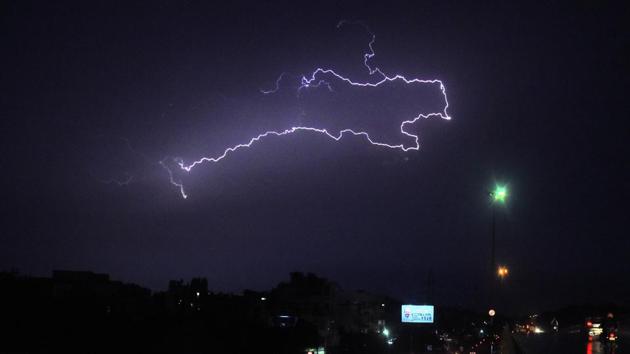Deficient rain may have added to pollution spike
The northern plains have not seen substantial rainfall since last week of August. In September, rain deficiency in the region hovered between 80% and 92%, resulting in below normal monsoon rains , forcing farmers to harvest their crops early.
Acute dryness of the ground due to almost nil rainfall in the northern India plains could have contributed to the spike in air pollution in the region, experts said, even as weather men predict dry weather will continue for the next fortnight.

Data from the India Meteorological Department (IMD) shows that Delhi, Haryana, Punjab and Western Uttar Pradesh, the areas worst hit by air pollution, have not received any rainfall since October 1, 2020, when the monsoon officially withdrew from northern India.
Even Jammu and Kashmir, Himachal Pradesh and Uttarakhand, which usually receive good rainfall in the post-winter months, have rainfall deficiency of 78% to 99%.
The higher reaches of these states received some snowfall in the last week of October and November.
But the northern plains have not seen substantial rainfall since the last week of August. In September, the rain deficiency in the region hovered between 80% and 92%, resulting in below normal monsoon rains , forcing farmers to harvest their crops early. Experts attribute two reasons for the huge rainfall deficiency.
First, said D S Pai, senior scientist at IMD, Pune, is the impact of La Nina, (little girl), a weather phenomenon in the Pacific Ocean.
“La Nina brings good rain during monsoon but has opposite impact in the post monsoon period as it can prevent formation of cyclonic conditions in Bay of Bengal, which can reduce rains. And, we seeing La Nina impact in post monsoon period,” he said. La Nina has cooling impact on the sea surface in the Pacific unlike El Nino, which has a warming impact.
Second, said IMD director general M Mohapatra, there were fewer western disturbances, caused by storm originating in the Mediterranean region that brings rain and in winter months snow to the north-western parts of India, this year.
“We have not witnessed any major western disturbance so far ,” Mohapatra said.
While the dry weather conditions have led to drought-like conditions in northern Indian plains, it has also contributed to a spike in air pollution because of the earth being drier. Particulate matter air pollution is driven by dust and dry weather conditions mean more dust that can be carried by the winds.
“Moisture in the air and ground absorbs pollutants,” said a scientist with the Indian Institute of Technology, who was not willing to be named as he is part of a Central government environment committee. “In dry conditions, the surface dust from agriculture fields, alongside roads and semi-arid areas in Rajasthan is getting carried with the westerly winds and is contributing to smog like conditions in northern Indian cities.”
Air pollution in the National Capital Region and nearby areas had been in the severe zone for the past six days with slight improvement on Wednesday with higher wind speed. Northern Indian cities and towns have experienced high levels of air pollution since the last week of October.
The dry weather has also meant more forest fires in Himachal and Uttarakhand . Close to 250 forest fires have been reported from the two states, official said. Forest fires are generally reported from February to June, with a peak in May and June, the two warmest months in the Indian sub-continent. Maan Singh, nodal officer for forest fires in the Uttarkhand state forest department, said, “With the hilly regions not receiving any rainfall since mid September, forests have become dry and are prone to fire. Almost 100 incidents of forest fires have been reported since October 1.” A Himachal forest official said the state has reported about 150 such incidents.
The long dry spell has also delayed sowing of winter crops in the region.
Rakesh Takait, president of Bharatiya Kisan Union, a farmer group, said weather conditions are not conducive for sowing of crops in non-irrigated agriculture fields in of Punjab, Haryana and western UP. “Most farmers are waiting for a good shower to sow the winter wheat crop,” he said.
Vijay Sastri, Uttarakhand spokesperson for Bharat Kisan Union, said, “The sowing season for winter crops starts from November in the hilly regions, but this year, due to lack of rainfall the farmers are still waiting. Farmers are also worried as no rains would mean poor harvest of horticulture crops.”
IMD has predicted sparse rainfall and snow in higher reaches of western Himalayas on November 15.




